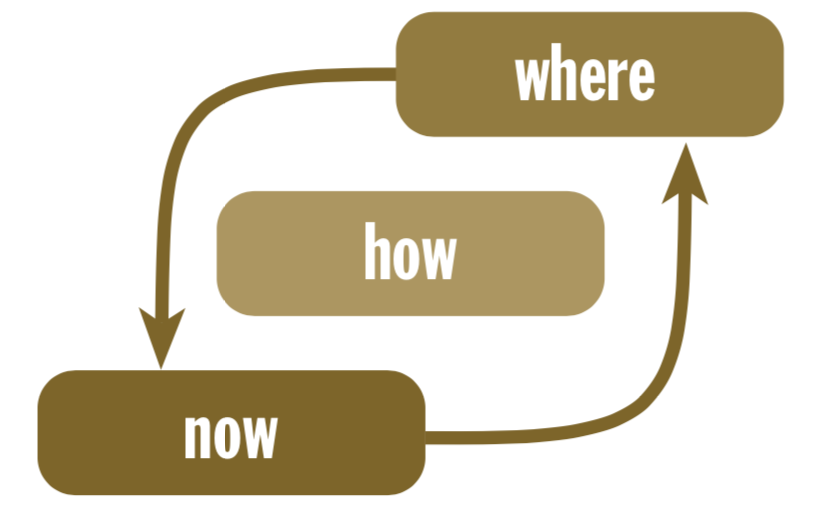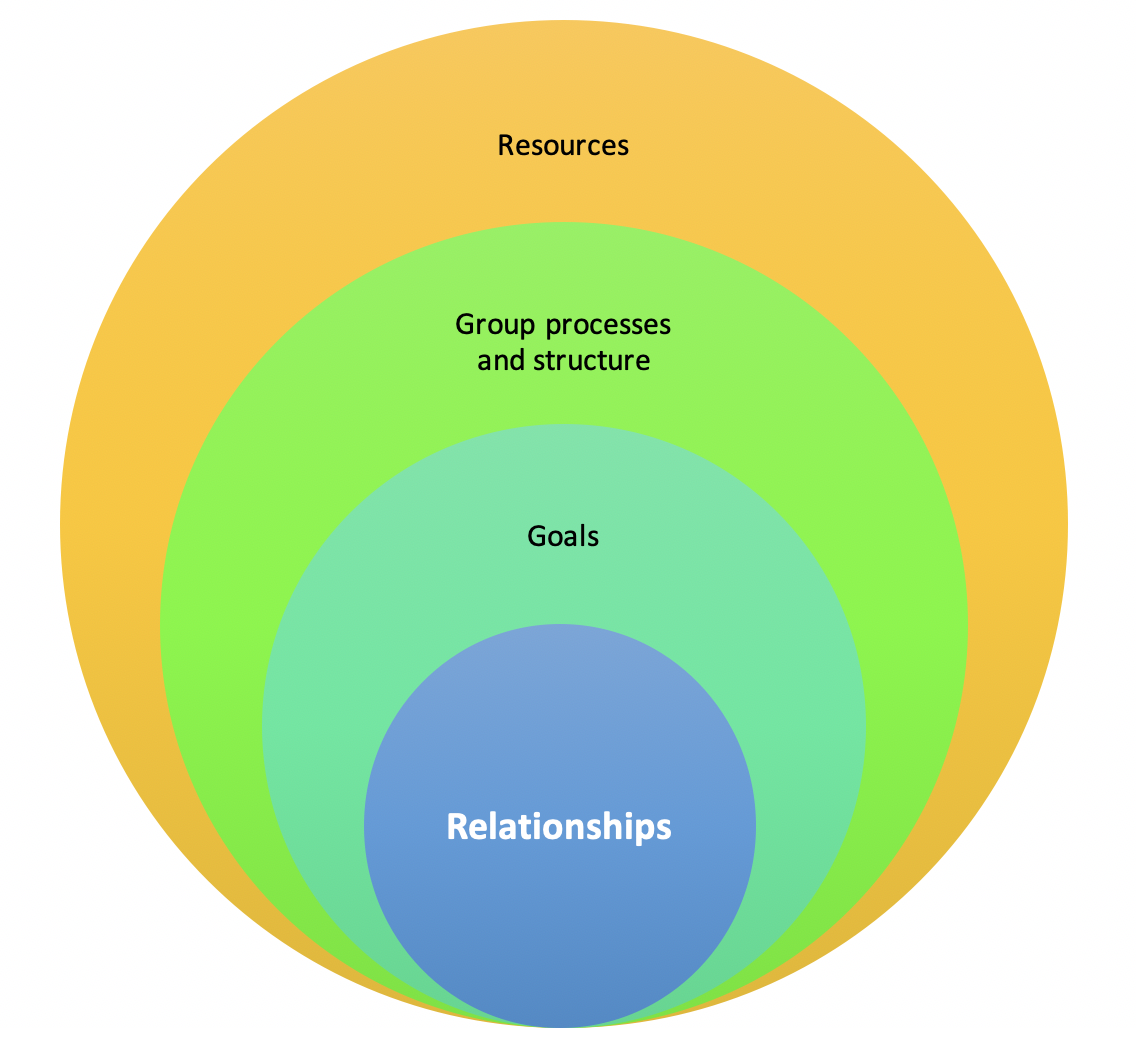Extension often involves working with groups of people. As an extension professional, we use special skills to do so and these are things that can be developed and improved over time. This article will provide things to consider to help you get the best out of other people and yourself, when establishing groups. They are tips that can make working in any group of people more effective, successful and enjoyable.
“Is your group going to reach its potential?”
When working in any group to assist them reach their potential, people are your most valuable asset. The group members ultimately dictate the success of the group and how well they use themselves and other resources at their disposal. An extension professional may get involved to enable technology transfer, technology development or to see environmental, resource or social issues addressed.

“Where are group members at to start with and where do they want to get to? The group is the “how””
When groups commence, they will always work better when they have the skills to:
- Use time effectively.
- Prioritise activities.
- Determine their goals and objectives.
- Develop plans and put them into action.
- Have the ability to monitor and evaluate their progress.
- Understand group members different points of view.
- Have different personalities and learning styles understood and catered for.
- Encourage all group members to contribute to the group.
- Keep stress levels down.
- Maintain personal and group motivation.
- Use each members’ strengths.
- Listen effectively to each other.
- Identify and resolve any conflicts.
- Find solutions to management problems.
- Increase individual and group productivity and profitability, or whatever outcomes they desire out of the group.
 “In group establishment, effective relationship formation is the key”
“In group establishment, effective relationship formation is the key”
Laying the Foundation
Experience tells us that good beginnings are often the most critical stage in a group’s success.
Laying the foundations for a successful group means addressing three key areas:
Understanding the things we collectively would like the group to achieve and making sure that group members have shared goals
- People must be motivated to get involved. A key shared interest, goal, opportunity, issue or concern; is often the motivator to bring people together. Making worthwhile achievements, enjoying working with each other and feeling like they are contributing as group members and their efforts are appreciated, is what makes people stay.
- It is useful to identify and engage any key influencers that share the need for group formation and will encourage and influence others to be involved.
- Setting expectations and focussing as a group on a common goal and associated tasks early, is very important to group success. Tips on the setting and reviewing of goals, action plans and an overall vision and mission and suggested processes that can help, can be found in this article, click here.
- All members having clear expectations of the group that are understood by all, is very important.
- Presenting clearly and effectively, helps in getting a group on the same page and focussed on opportunities that may be important to them. Information on designing effective presentations can be found in this article, please click here.
- Needs Analysis is often a great first step to take with groups, this article can provide great tips on conducting Needs Analysis, click here.
- The Nominal Group Technique is a great group extension technique for drawing out individual member input on ideas, issues or problems. For more information, click here.
- The ORID semi structured discussion method is a great process for helping individuals and groups consider things in a logical manner, for more information click here.
- Mind Mapping is a useful and simple tool for brainstorming and getting ideas out from a group, for more information click here.

“You want people with the confidence to happily engage”
Getting to know the people we are working with in the group
- Introductory presentations are often used by facilitators, here are some useful tips on developing effective presentations, please click here.
- Good and effective introductions are critical. People need to appreciate the importance of spending time getting to know the people they are going to be working with. This Extension Practice post provides some ideas on Ice Breakers that can be used, click here. Planning some social activities and allowing time to socialise, is important in group engagement and also in their maintenance.
- Understanding people and how they behave and that people are different and sometimes each will behave differently, even when they are having the same experience, is extremely important in order to facilitate group establishment effectively. There are a range of personality test tools that can help. The DISC personality test is a good example and it can help promote good discussion, help better tailor group processes and people get a better understanding of themselves and others when using it. For more information, click here.
- Reflecting on different Learning Styles and using a learning styles assessment activity early on with the group can also be very useful. This article on Peter Honey and Alan Mumford Learning Styles will be useful, click here.
Being clear about how we want to behave and interact within the group
Developing agreed group guidelines is important in group formation. Group members do like having input into how they are going to operate and in doing so get buy in and are more likely to commit. Areas to develop guidelines for include:
- How often, what time and where to meet.
- Commitment to starting and finishing on time.
- Meeting format, processes and how discussions are to be managed.
- Setting agreed expectations, action plan processes and how things are to be recorded.
- Acceptable behaviours.
- Expected attendance and commitment.
- Involvement and introduction of outside parties.
- If money and funding is involved, how it is to be managed and does the group need to be incorporated.
Agreeing on roles and responsibilities is also important
- If a facilitator is used they may: Run group processes. Set times and tasks. Manage the group discussions. Highlight major themes, issues and opportunities. Ensure things are recorded. Ensure group interpersonal communication works well. Facilitate negotiations and problem solving, for more information, click here.
- Group members need to agree on a group structure, on their roles within the structure, what their level of input will be and how decisions are to be made. This is particularly important so that not too much is expected of too few and individual members aren’t at risk of burnout.
- Ground rules should be considered, e.g. All ideas are valid and welcome, having agreed goals, being considerate and empathetic of each other with no personal attacks, being proactive and future focussed, making sure things are enjoyable, starting and finishing on time.
Steps to forming a group
- Why does a group need to form? Be able to clearly articulate this to others.
- Identify what resources are required to support a group forming and operating.
- Identify what incentives or motivators there are for people to join.
- Identify what is to be expected of group members and any key roles and responsibilities that need to be filled.
- Identify and engage with key influencers who may be able to take on an initial role or responsibility and can help encourage the “right” people to join the group.
- Organise the first meeting at a time and in a location that contributes to likely success. Present clearly on the need for the group, WIFM (what’s in it for them) and the nature of the commitment in becoming a member.
- Allow time for and encourage some social interaction and enjoyment as part of the first meeting.
- Towards the end of the meeting ensure you identify and document key actions, seek their formal commitment and record the next steps from the first meeting. Importantly identify the date, time and location for the next meeting and what is to occur between now and then.
- Engage with and provide follow up information to attendees.
As the group comes together and forms, it is useful as a facilitator to observe and reflect on understanding people’s relationships and how the may be supported to become more effective, the concepts in Social Network Analysis can help, for more information click here.
“Fundamentally group formation relies on the forming and maintaining of effective relationships”
Relationship processes overlaid on the traditional Kolb learning cycle model – Fleming et al, 2014
Content Sources and Further Information
(2001) Meat and Livestock Australia, Edge Network, Working in Groups Workshop Notes.
(2003) Kilpatrick, S. Bond, L. Bell, R. Knee, J. Pinkard, G. Effective farmer groups for defining best practices for sustainable agriculture. The Regional Institute Online Publishing.
Dairy Farmer Discussion Group Resources Kit. Dairy Australia.
(2017) Johnson, D. Johnson, F. Joining Together: Group Theory and Group Skills (12th Edition) (The Merrill Counseling Series). ISBN-13: 978-0134055732
(1999) De Bono, E. Six Thinking Hats. Penguin, 2000. ISBN: 9780141033051
(1999) Orsburn, J. Moran, L. Musslewhite, E. Zenger, J. The New Self Directed Work Teams: Mastering the Challenge. New York : McGraw-Hill, 2000. ISBN: 007043414X
(1989) Woodcock, M. 50 Activities for Team Building. HRD Press Inc. ISBN: 0-87425-192-3
Conflict Resolution Network www.crnhq.org
(1996) Landsberg, M. The Tao of Coaching. (1996). Harper Collins Business.
(1990) Bolton, R. People Skills, (1990). Simon & Schuster: Brookvale, Australia.
(1992) Covey, S. Principle-Centered Leadership. Simon and Schuster: New York.
(1996) Blanchard, K. & Johnson, S. The One Minute Manager. Harper Collins Business: United Kingdom.
(1985) Smith, N. Ainsworth, W. Murray. Ideas Unlimited (1985). Thomas Nelson: Melbourne, Australia.
(1983) Von Oech, R. A Whack on the Side of the Head. Warner Books: US.
(1998) Johnson, S. Who Moved My Cheese? Vermilion: United Kingdom.
(1989) Cornelius, H. & Faire, S. Everyone Can Win. Simon Schuster: Australia.
